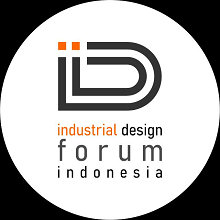ANALISA ASPEK ‘FUN’ DENGAN MENGGUNAKAN TEORI VITRUVIUS dan SIR HENRY WOTTON PADA PRODUK MAINAN
Abstract
Fun aspect is the main function of toy product design. On toy products for children this may not be a difficult job because aspects of pleasure can be more easily measured by designers. But on adult targets this is no longer easy because there seems to be something complex with regard to this aspect of pleasure. The fun and use of products experienced by adults is thought to be different from the fun and use of toy products experienced by young children, so in this study will find out about what kind of fun experienced by adults in using their toys and what elements of such toys are considered to bring senility. The study aims to find new forms that are dwarfed by adult toy product users. To answer this, this research is included in the basic research which goes into TKT level 2, namely with the stages of literature study and initial analysis. This is realized by gaining the experience of adult toy fans with the process of interviewing and observation as a user of the product which is then abstracted using the theory of user experience in order to find a model of how to use the toy and then will be reviewed with theory of fun. The next stage of the toy's product properties will then be reviewed using discussions using Vitruvius Theory and Sir Henry Wotton. The results that will be obtained later are expected to explain the model of fun type in using toy products. This is expected to be a useful basis for the development of design science, especially the design of toy products that is to determine the design process of toy products
Keywords
Full Text:
PDF (Bahasa Indonesia)References
Airey, S., Plowman, L., Connolly, D., & Luckin, R. (Agustus, 2002). Rating children's enjoyment of toys, games and media. In 3rd World congress of the international toy research association on toys, games and media, London (Agustus, 19-22).
Assmann, J. (2006). Form as a mnemonic device: Cultural texts and cultural memory. Performing the Gospel, 67-82.
Fletcher, B. (1905) A History of Architecture on The Comparative Method. London: Batsford.
Heljakka, K. (2008). Toy stories. Design. Play. Display. Adult experience with designer toys. On Conference Proceedings, The Nordic Conference of Experience: Research, Education and Practice in Media.
Heljakka, K. (2013). Principles of adult play (fulness) in contemporary toy cultures: From Wow to Flow to Glow. Finland: School of Arts, Design and Architecture.
Koster, R. (2013). Theory of fun for game design. US: O'Reilly Media, Inc.
McEwen, I. K. (2003). Vitruvius : Writing The Body of Architecture. Massachusetts Institute of Technology. London: The MIT Press.
Norman, D. (2004). Emotional design: Why we love (or hate) everyday things. New York: Basic Books.
Norman, D. (2013). The Design of Everyday Things. New York: Basic Books.
Papadakis, D. Cooke, C., & Benjamin, A. E. (1989). Deconstruction (Omnibus Volume). London: Academy Edition.
Soedarwanto, H. (2018). Teori Vitruvius Vs Teori Sir Henry Wotton (Utilitas-Firmitas-Venustas dan Commodity-Firmness-Delight) Dalam Desain Produk. NARADA Jurnal Desain dan Seni, 5(2), 155-163.
Thomas, V. (July, 2018). Work and Play-Experiences in Toy Town. 8th International Toy Research Association World Conference. International Toy Research Association (ITRA), 11-13 July, Paris, France. ⟨hal-02083104⟩.
DOI: http://dx.doi.org/10.22441/narada.2021.v8.i2.007
Refbacks
- There are currently no refbacks.
Fakultas Desain dan Seni Kreatif
Universitas Mercu Buana
Gedung E Lantai 4
Jl. Raya Meruya Selatan no.1, Kembangan, Jakarta 11650
Tlp./Fax: +62215871335
Journal International Standard Serial Number (ISSN) Registration:
The Journal is indexed by:
Tools for Citations & Plagiarism Detection:

Ciptaan disebarluaskan di bawah Lisensi Creative Commons Atribusi-NonKomersial 4.0 Internasional
 NARADA: Jurnal Desain dan Seni
NARADA: Jurnal Desain dan Seni

























